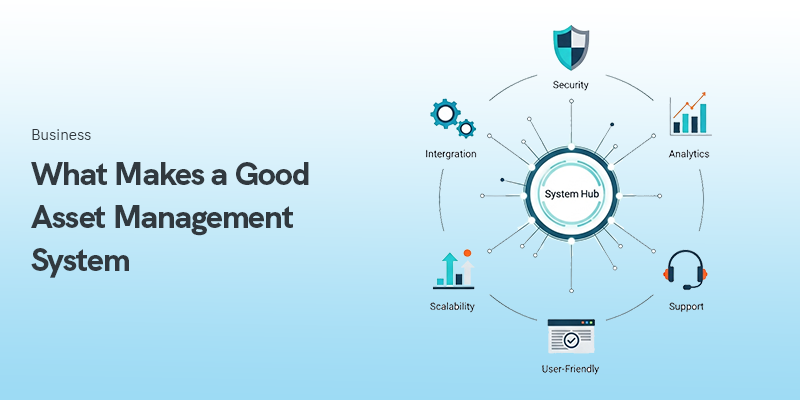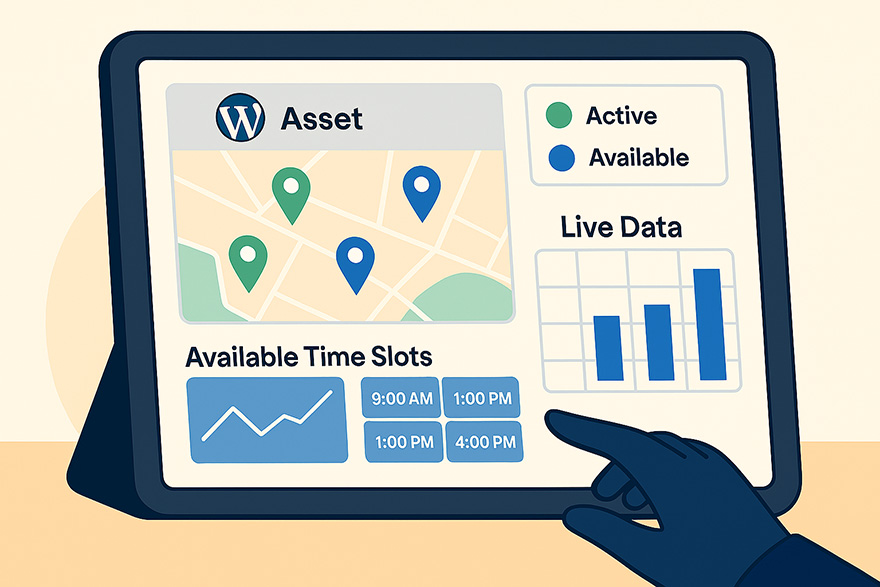
What Makes a Good Asset Management System in 2025
Effectively managing assets and resources is crucial for businesses. Implementing a strong asset management system can significantly improve productivity in an organization.
Key Takeaways: What Defines a Good Asset Management System
Effective Asset Management System
In this article, we will look at what makes a good asset management system and discuss its key features.
Efficiency and Accuracy
An accurate and robust mobile asset management system is the foundation for any good strategy to manage your resources and access data when you need it. A system that provides visibility on location, status, and condition in real time helps you make informed decisions.

This functionality minimizes downtime, increases productivity, and ensures effective utilization of resources.
User-Friendly Interface
An intuitive design allows users to effortlessly navigate the system and minimizes the learning curve.
By allowing employees to access the data at their fingertips, the asset management process becomes smooth and efficient. A good system should not take a lot of time for training, thus saving time and reducing operational costs.
Scalability
An excellent asset management system can accommodate growth. The system should scale as the business grows and cope with increased volumes and complexity of assets without compromising on quality.
This flexibility helps an organization scale its operations without the need for a full revamp of its software and systems. Mobile asset management systems are a long-term solution, as they save time and money by offering a scalable solution.
Integration Capabilities
An asset management system will easily integrate with other tools and systems you already use.
An asset management system should work well with software used for finances, payroll, customer relationship management (CRM), and other business applications. Having everything together allows information to pass smoothly across departments with no redundancy and improved efficiency.
Security Features

Protecting data is paramount. A good system should be secure and prevent unauthorized access and data breaches.
Encryption, user authentication, and even regular security updates are critical. These features ensure that sensitive information is protected, building trust within an organization.
Customization Options
Every organization has unique needs. Asset management systems can be personalized based on a company’s requirements.
Customizing the system by configuring workflows or creating custom reports ensures it aligns with business objectives. This flexibility enhances user experience.
Cost-Effectiveness
It is important to invest in a quality asset management system that is also budget-friendly. The advantages of the system should exceed its costs and offer good value for the money.
This leads to financial savings over time as organizations optimize the use of resources and minimize waste.
Reporting and Analytics
Robust reporting and analytics must go hand in hand. Mobile asset management systems should offer organizations visibility into how assets are performing and being used, helping them spot trends and identify areas of improvement.
With this insight, businesses can make informed decisions about where their resources need to be allocated, thereby increasing efficiency.
Support and Maintenance
Peace of mind is only guaranteed when ongoing support and regular maintenance are integrated into a system.
With a good asset management provider, you will always have access to a responsive customer support team. If anything comes up, you can rest assured that things will be fixed promptly.
Regular updates and maintenance keep the system running efficiently, minimizing downtime and disruptions.
Compliance and Regulation
Any asset management system must ensure that the organization complies with industry standards. The system must be built to ensure compliance and prevent the organization from running into legal troubles.
This safeguards an enterprise and instills confidence among stakeholders.
Conclusion
No organization can function without an effective mobile asset management system.
These solutions offer several features, such as ease of use, scalability, and security, to increase efficiency in an organization and ensure they effectively manage their assets.
With the right system, organizations can guarantee that their assets, equipment, and resources are organized and available, allowing them to meet their goals.
Investing in a robust asset management system results in enhanced operational efficiency and drives long-term growth.
Frequently Asked Questions about Asset Management Systems
Recommended Posts

How to Create an Effective Event Marketing Plan from Scratch in 2025
December 22, 2025


